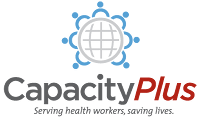HRH Strategic Plans
Strengthening Human Resource for Health in South-East Asia: Time for Action and Commitment (Report of a regional meeting, Thimphu, Bhutan, 19–21 November 2014)
The meeting was organized under three themes: (i) rural retention of health workforce; (ii) transforming and scaling up health professionals’ education and training; and (iii) human resources for health in the context of universal health coverage(UHC). [from abstract]
- 709 reads
Assessment of Human Resources for Health Programme Implementation in 15 Latin American and Caribbean Countries
The health systems in the Americas region are characterized by fragmentation and segmentation, which constitute an important barrier to expanding coverage, achieving integrated primary health care, and reducing inefficiency and discontinuity of care. [from abstract]
- 630 reads
Midterm Review of National Health Plans: An Example from the United Republic of Tanzania
In the health sector, planning and resource allocation at country level are mainly guided by national plans. For each such plan, a midterm review of progress is important for policy-makers since the review can inform the second half of the plan’s implementation and provide a situation analysis on which the subsequent plan can be based. [from abstract]
- 687 reads
Strategic Planning for Health: A Case Study from Turkey
This report explores the role of strategic planning in Turkey’s successful transformation of its health sector since 2002. It analyses the evolution of strategic planning for health from an informal tool to an official and highly structured process that closely follows the steps identified in accepted models of strategic planning. [from abstract]
- 696 reads
Health Workforce Productivity Analysis and Improvement Toolkit
The Health Workforce Productivity Analysis and Improvement Toolkit describes a step-wise process to measure the productivity of facility-based health workers, understand the underlying causes of productivity problems, and identify potential interventions to address them and improve health service delivery and achieve health goals. This toolkit focuses specifically on the productivity of facility-based health workers and not that of the health system as a whole. [from introduction]
- 837 reads
Global Governance and the Limits of Health Security
The time has come to move from a focus on health security and international crisis response, to a system of global
governance capable of addressing infectious disease outbreaks in an orderly, organised and sustainable manner. [from abstract]
- 545 reads
Structural and Contextual Dimensions of Iranian Primary Health Care System at Local Level
This study was performed to illustrate structural and contextual dimensions of organizational structure and relationship between them in Iranian primary health care system at local level. [from abstract]
- 526 reads
The Right to Health, Health Systems Development and Public Health Policy Challenges in Chad
This paper uses a secondary data analysis of existing documents by the Ministry of Public Health, Institut National de la Statistique, des Etudes Economiques et Démographiques(INSEED), the Ministry of Economy and Agence Française de Cooperation to analyze critically the shape and performance of health systems in Chad based on key concepts and
components of the right to health contained in article 12 of the International Covenant on Economic, Social and Cultural Rights, and on General Comment 14. [from abstract]
- 545 reads
Health Workforce Planning: An Overview and Suggested Approach in Oman
This review analyses various approaches to health workforce planning and presents the Six-Step Methodology to Integrated Workforce Planning which highlights essential elements in workforce planning to ensure the quality of services. [from abstract]
- 928 reads
The Role of the District Family Physician
District clinical specialist teams were formed in 2012. One member of the team is the family physician. The role of the district family physician is discussed and the case made for focusing on the organisational health of the medical teams practising family medicine within the district as an effective way to improve the quality of medical care delivered in the district. [from abstract]
- 645 reads
Strengthening the Foundation for Sustainable Primary Health Care Services in Nigeria
The aim of this descriptive, interventional study is to highlight positive steps taken by governments to re-establish and revitalise PHC, especially by empowering communities, the challenges, and lessons learned as potentials for improvement of a universal, qualitative PHC system in Nigeria. [from abstract]
- 8131 reads
Ebola Virus Disease Epidemic in West Africa: Lessons Learned and Issues Arising from West African Countries
How can the world improve the health systems in low- and middle-income countries to effectively manage future outbreaks? Recently, the Royal College of Physicians launched a new partnership with the West African College of Physicians to curtail the effects of HIV/AIDS, malaria and tuberculosis in the region. We believe that strengthened health systems, skilled human resources for health and national ownership of problems are key to effective management of outbreaks such as Ebola Virus Disease. [from abstract]
- 594 reads
PEPFAR Human Resources for Health Strategy - PEPFAR 3.0
PEPFAR is pivoting the scale-up of resources and services towards health service delivery sites with moderate and high yield of patients, communities that link patients to those sites, and geographic areas with high burden of HIV. Meeting demand in those settings requires an adequate supply and appropriate skills mix of HRH available to provide quality HIV services along the continuum of care. [from introduction]
- 961 reads
Guidance for Establishing a National Health Laboratory System
Establishment of a comprehensive National Health Laboratory System provides the framework for coordinated development and delivery of accessible, quality laboratory services countrywide. This ‘’Guidance for Establishing a National Health Laboratory System‘’ provides technical guidance for the steps required to develop a National Laboratory Policy and National Laboratory Strategic Plan, and effectively implement all the key elements of a comprehensive National Health Laboratory System. [from executive summary]
- 470 reads
Rural-Proofing for Health: Guidelines
A guide to accounting for rural contexts in health policy, strategic planning and resourcing. Addressing the
specific rural health context in policy design, budget allocations and implementation plans is not yet a standard process in South Africa. This guide addresses that, to ensure that “the rural health context” is addressed adequately
when new policies and budgets are drawn up and implemented in the beautiful rural parts of our country. [adapted from resource]
- 723 reads
Guide for Developing National Patient Safety Policy and Strategic Plan
A national patient safety policy is essential but it must reflect the context and needs of the individual country. To avoid reinventing the wheel, patient safety policy must reference internationally approved and tested guidelines and policy recommendations. Policy-makers require an accessible resource for the task of developing the national patient safety policy and patient safety strategic plan in order that they are comprehensive as well as precise and yet uncomplicated and flexible. [from introduction]
- 640 reads
Comparative Study on Health Care System Between Myanmar and China According to World Health Organization (WHO)’s Basic Health Blocks
This paper is a comparative analysis between China’s and Myanmar’s health systems, viewed through the WHO’s six building blocs of health systems: service delivery, health workforce, health information, access to essential medicines, health financing, leadership or governance.
- 837 reads
Economic Evaluation of Complex Health System Interventions
The discussion paper provides guidance to those tasked with conducting an economic evaluation of complex health system interventions. The guidance will be an elaboration of existing National guidelines for economic evaluation and serve as a discussion paper to aid investigators conducting economic evaluations of complex health interventions. This paper is intended to be a starting point for heatlh system and policy researchers who wish to understand some of the fundamentals of economic evaluation and its application complex interventions. [from abstract]
- 571 reads
Analysis of Health Sector Gender Equality and Social Inclusion Strategy 2009 of Nepal
The policy on gender equality and social inclusion (GESI) in health sector of Nepal is formulated in 2009 targeting toward poor, vulnerable, marginalized social and ethnic groups. Gender inequality and social discrimination are a social problem that affect on individual health finally. The main objective of this paper is to critically analysis and evaluates the Government’s strategy on health sector gender equality and social inclusion in Nepal. [from abstract]
- 632 reads
How The Government Intervention Affects the Distribution of Physicians in Turkey Between 1965 and 2000
The aim of this study is to analyse the distribution of physicians, GPs and specialists between the years 1965-2000 and the efficiency of the strict 15 year government intervention (1981-1995). [from abstract]
- 580 reads
Climate for Evidence Informed Health System Policymaking in Cameroon and Uganda Before and After the Introduction of Knowledge Translation Platforms: A Structured Teview of Governmental Policy Documents
There is a scarcity of empirical data on African country climates for evidence-informed health system policymaking (EIHSP) to backup the longstanding reputation that research evidence is not valued enough by health policymakers as an information input.
Herein, we assess whether and how changes have occurred in the climate for EIHSP before and after the establishment of two Knowledge Translation Platforms housed in government institutions in Cameroon and Uganda since 2006. [from abstract]
- 539 reads
Tajikistan Country Assessment: Focus on Cardiovascular Disease
Cardiovascular diseases are the predominant cause of death in Tajikistan, with a growing burden of ischemic heart disease, strokes and cirrhosis between 1990 and 2010. Considering this, this report focuses on cardiovascular diseases and their risk factors, such as hypertension and poor nutrition; it is estimated that 40% of the Tajik population is overweight and 9% is obese. [from abstract]
- 611 reads
A Scoping Review of Training and Deployment Policies for Human Resources for Health for Maternal, Newborn, and Child Health in Rural Africa
Most African countries are facing a human resources for health (HRH) crisis, lacking the required workforce to deliver basic health care, including care for mothers and children. To address the HRH challenges, evidence-based deployment and training policies are required. However, the resources available to country-level policy makers to create such
policies are limited. To inform future HRH planning, a scoping review was conducted to identify the type, extent, and quality of evidence that exists on HRH policies for rural MNCH in Africa. [from abstract]
- 666 reads
Pathways to Progress: A Multi-Level Approach to Strengthening Health Systems
This report synthesises findings from five country case studies from the health dimension of this project, which focus
on maternal and child health (MCH) (Mozambique,Nepal, Rwanda) and neglected tropical diseases (NTDs)(Cambodia, Sierra Leone). MCH was selected given its centrality in two of the Millennium Development Goals (MDGs) and its ability to act as a proxy for strengthened health systems.
- 706 reads
Needs-Based Human Resources for Health Planning in Jamaica: Using Simulation Modelling to Inform Policy Options for Pharmacists in the Public Sector
The purpose of the work described in this paper is to describe the development and application of a needs-based HRH simulation model for pharmacists in Jamaica’s largest health region. [from abstract]
- 652 reads
Policy Brief: Strengthening Vital Statistics Systems
The Policy Brief has looked into different systems that produce data on causes of death and laid out some options and potential strategies that countries might follow to rapidly and cost-effectively improve the cause of death information that these systems produce. This in turn would greatly benefit national health planning and increase critical knowledge about disease burden in the region as well as provide accurate information about how it is changing. [from introduction]
- 544 reads
Human Resources for Health in Botswana: The Results of In-Country Database and Reports Analysis
The aim of this study was to analyse the existing databases on health workforce in
Botswana in order to quantify the human resources for health.
- 715 reads
Health Workforce 2030: A Global Strategy on Human Resources for Health
A global strategy on human resources for health that addresses, in an integrated way, all aspects ranging from planning, education, management, retention, incentives, linkages with the social service workforce, can inform more incisive, multi-sectoral action, based on new evidence and best practices. This brochure sheds light on why a global strategy on HRH is necessary and outlines the process of developing WHOs strategy. [from abstract]
- 1248 reads
Road Map for Scaling Up the Human Resources for Health in the African Region 2012–2025
The Road map, which was developed with the appreciable contribution of critical stakeholders such as ministries of health, education, public services and finance as well as universities and training institutions regulators, professional bodies, civil society and nongovernmental organizations, defines strategic directions and priority interventions to be implemented in the period 2012–2025. [from introduction]
- 663 reads
Human Resources for Health in India: Challenges and Way Forward
India faces enormous challenge in human resources for health care delivery system. Geographical misdistribution and urban-rural health worker deficit impedes the progress towards achieving Millennium Development Goals. Many rural Indians receive health care from unqualified providers. Rational distribution and retention of qualified providers in rural and remote areas is a daunting task for the government. Little attention is paid in public medical institutions for the real health needs of the community. [from abstract]
- 1386 reads




